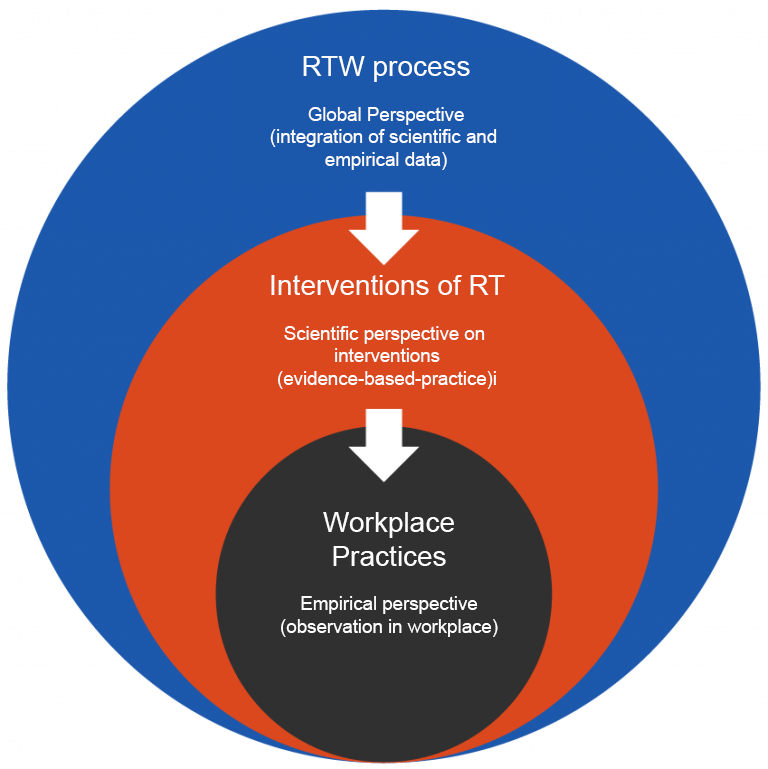The return to work
Return to work is a six-step process: 1) Time off and recovery period; 2) Initial communication with the worker by the workplace; 3) Assessment of the worker (work capacity) and his or her work (job demands); 4) Development of the RTW plan with work accommodation measures; 5) Return to work (day 1); 6) Follow-up of RTW (in the following weeks).
Different actors are involved in the RTW process: workplace actors and consultants or experts (health professionals, ergonomists, occupational hygienists). This section will help you coordinate them appropriately.
